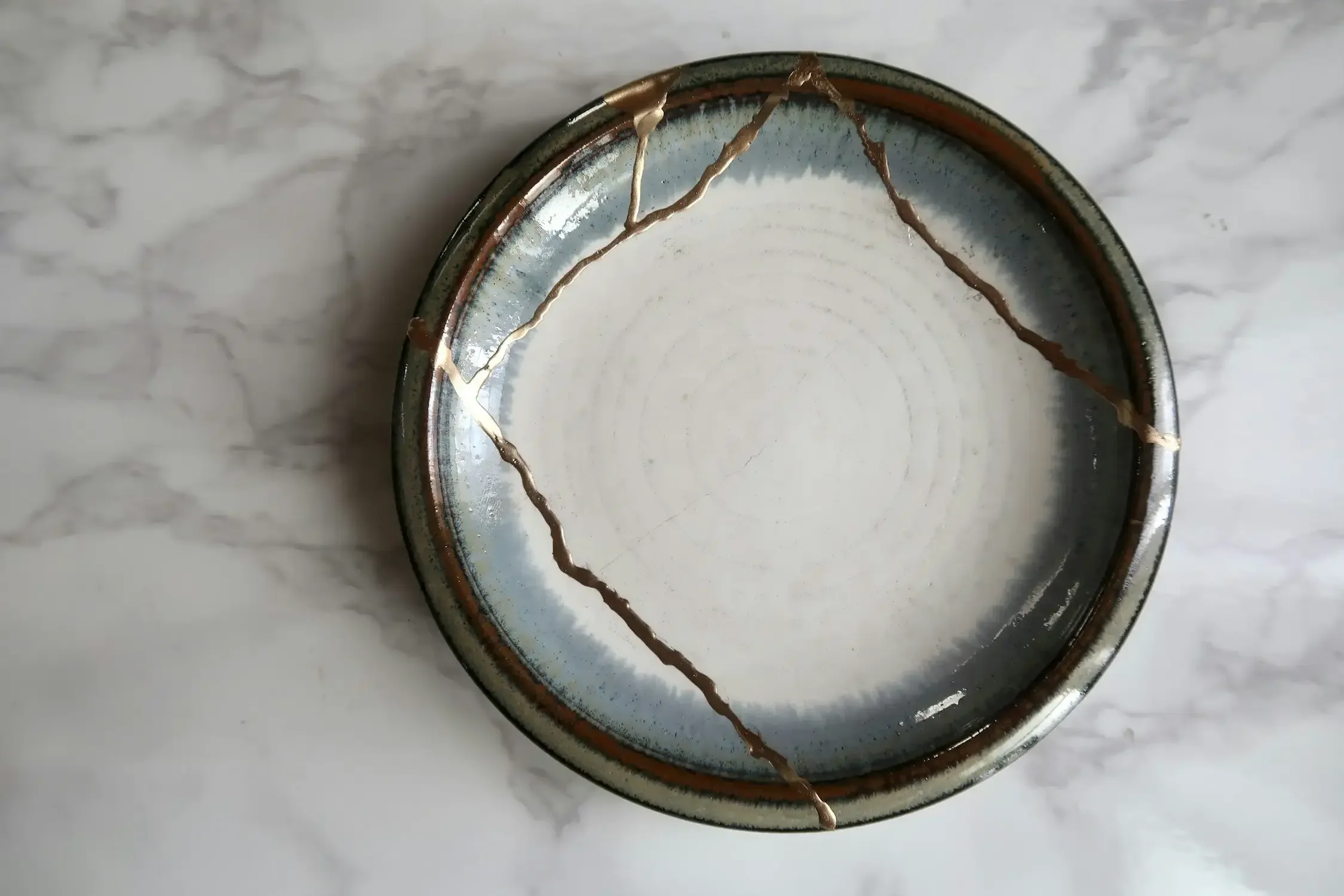Kintsugi as a Therapeutic Metaphor: Embracing Your Cracks and Reclaiming Your Wholeness
In therapy, we often talk about healing, moving forward, and self-compassion—but what if we could visualize that process as a golden thread holding our broken pieces together? The ancient Japanese art of Kintsugi, which means “golden joinery,” offers a compelling metaphor for emotional and psychological healing. Rather than hiding flaws, Kintsugi celebrates them, transforming broken pottery into something even more beautiful than before.
From a therapeutic perspective, Kintsugi teaches us that healing isn’t about perfection or erasing the past—it’s about honoring it.
What Is Kintsugi?
Kintsugi is the traditional Japanese practice of repairing broken pottery with lacquer mixed with powdered gold. Rather than concealing the cracks, the repaired item becomes even more striking, with its fractures emphasized in shimmering metallic lines.
In mental health work, this process resonates deeply: We, too, can be repaired in ways that highlight our resilience rather than disguise our pain.
Kintsugi as a Metaphor in Therapy
1. Your Cracks Tell a Story
We live in a culture that often rewards “holding it together” and hiding pain. But therapy invites a different approach—one where we acknowledge and work with the brokenness rather than pretend it’s not there. Kintsugi reminds us that our emotional scars can become part of our narrative, not something to erase.
In trauma work, especially, this can be a revolutionary shift: you are not “damaged goods.” You are someone who has lived through pain and is finding a way to move forward—with gold in your cracks.
2. Wholeness Doesn’t Mean Perfection
In the therapeutic process, clients often struggle with the idea of becoming “whole” again. But wholeness doesn't mean returning to how things were before, we can’t go back in time. It means embracing all parts of ourselves—including the ones that feel broken, ashamed, or grieving.
Like a Kintsugi bowl, your healing doesn't erase what happened—it integrates it in a way that brings new beauty and meaning.
3. Imperfection as Beauty
Many people enter therapy feeling flawed, unworthy, or ashamed. Kintsugi flips this narrative: the flaw becomes the most interesting and beautiful part. In trauma therapy, this can support the work of reauthoring your story—one that acknowledges pain without being defined by it.
How Therapists Use the Kintsugi Metaphor
Therapists may draw from Kintsugi in the following ways:
Guided visualization: Imagine your heart or mind as a bowl being mended with gold.
Creative arts therapy: Clients literally repair broken pottery as a metaphor for healing.
Parts work: Identifying the “cracked” parts of self that need attention, care, and integration.
Self-compassion work: Exploring how to honor your emotional wounds rather than avoid or minimize them. It also means being kind to yourself and your parts that need attention and care.
Kintsugi and Trauma Recovery
Trauma shatters our sense of safety, identity, or worth. But like Kintsugi, trauma recovery isn’t about going back—it’s about moving forward with new strength and understanding.
Kintsugi encourages clients to:
Let go of shame around “cracks”
View healing as an artful, non-linear process
Find beauty in emotional resilience
Final Thoughts: You Are Not Broken
The therapeutic power of Kintsugi lies in its message: you are not broken beyond repair. In fact, your pain and healing are part of what make you whole and beautiful. As therapists, we hold space for clients to come undone, and slowly, carefully, begin to reassemble—with gold in the seams.
Ready to Explore Kintsugi for Yourself?
If the metaphor of Kintsugi speaks to you, imagine what it might feel like to experience it with your own hands. Whether through journaling, guided reflection, or the literal act of repairing broken ceramics, the Kintsugi process can be a powerful way to connect with your story, your strength, and your self-worth.
Want to learn more or join a therapeutic Kintsugi experience?
I'm currently offering Kintsugi workshops that combine mindfulness, creativity, and trauma-informed support. You’ll not only take home a beautiful piece of art—you’ll walk away with deeper insight into your own healing. Additionally, if you’re interested in a private Kintsugi experience or want to include it, please reach out to me.

